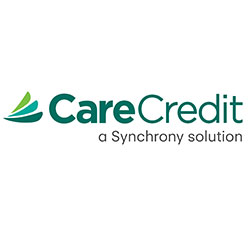Guidelines Objectives
The 2021 AAHA Working, Assistance, and Therapy Dog Guidelines have four principal objectives as noted below, along with the rationale for each objective.
Improve the practice team’s understanding of the special needs of working dogs.
Although practitioners may intuitively realize that working dogs have special needs, they may lack full awareness of healthcare implications and challenges of caring for this type of patient. The need to handle high-value dogs, protection dogs trained for on-command aggression, or high-energy working dogs can be intimidating to some practice team members. Care must be taken to avoid treatment decisions that impair the functionality of the dog, such as its mobility, detection skills, or alertness. Working dogs always function along with a handler, partner, or service team. The practice team must care for the patient but always in concert with the individual responsible for the dog or with the sponsoring organization. The relationship between the working dog and its handler can be exceptionally strong, for instance, in military or law enforcement settings where human life is sometimes in the balance. In other cases, the working dog is literally priceless when the animal’s performance is critical to human welfare, for example, in the case of guide dogs for visually impaired individuals. The working dog may not always be in the immediate or full-time care of the handler (e.g., customs dogs, TSA dogs, military working dogs). Some guide dog schools not only train the service dog but maintain ownership responsibility as well. Thus, treatment decisions and ownership responsibility for a working dog may fall to a sponsoring organization instead of an individual client as in the case of a conventional canine pet.
Develop an understanding of the dog’s special needs from the perspective of its handler or trainer.
The working dog’s trainer or handler is an essential and committed partner in the animal’s healthcare and has a role in executing the healthcare plan. It is essential that the practice team involve the human partner by understanding his or her role in the dog’s performance and by obtaining that individual’s observations and viewpoints on the dog’s health status and needs. The working dog’s human partner often has a different and more holistic role with a greater economic stake than a conventional pet owner might have. A working dog handler or trainer is attuned to their canine partner in a similar way as a zookeeper who is in continuous contact with and responsible for the care of a rare or exotic species, or a trainer working with an elite equine athlete. The working dog’s human partner will often notice subtle changes in the dog’s performance or disposition that can indicate early-onset disease, and in this respect can differ from conventional canine pet owners. The veterinarian should probe for these observations and give ample credibility to the dog handler’s perspective. The information obtained from the handler should be recorded in a detailed patient history that can be correlated with performance. Because the handler is in contact with the dog in a highly observant role, the human partner can often identify changes indicative of the dog’s physiologic status that would otherwise escape the veterinarian’s detection.
Enhance the well-being and safety and decrease the stress imposed on the practice teams who care for working dogs.
The practice team’s confidence in skillfully and safely handling working dogs is in direct proportion to its understanding of the special needs of this type of patient. A principal reason why practitioners may not fully appreciate the special needs of working dogs is that veterinary schools generally do not provide curriculum offerings on specialized care required by these animals. These guidelines seek to fill this information gap by providing recommendations on how the practice team can effectively interact with high-value working dogs and their handlers. These include the essential role that low-stress handling plays in the effective interaction between the patient and the practice team. Recording a thorough patient history, including acquisition of related video or photo documentation, is an especially important component of working dog care and involves asking questions specific to the dog’s societal or service role. Some working dog associations have veterinarians on staff that can serve as a valuable resource to the practice team, as described later in the guidelines.
Minimize the risk of infectious disease transmission and injury to working dogs by providing optimum preventive healthcare and nutrition.
Working dogs often interact with human handlers or clients who are experiencing health problems that put them at risk of zoonotic diseases. These include very young or older individuals and those who are convalescing or affected by chronic conditions. Conversely, working dogs might be exposed to occupational risks associated with their environment or duties. The practice team should be aware of the circumstances of the dog’s human partner and the setting in which the dog works. Video or photo documentation of work-related concerns or responsibilities (provided by the client) may also be facilitative for the care team’s understanding of the patient’s occupational hazards encountered. This may involve educating the human handler about first aid or husbandry specific to the dog’s function, transmissible disease exposure risks (including zoonotic diseases), and other unique health risks to which the dog might be exposed.







